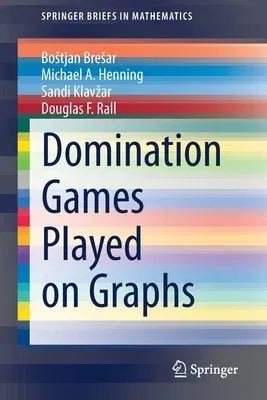This concise monograph present the complete history of the domination
game and its variants up to the most recent developments and will
stimulate research on closely related topics, establishing a key
reference for future developments. The crux of the discussion surrounds
new methods and ideas that were developed within the theory, led by the
imagination strategy, the Continuation Principle, and the discharging
method of Bujtás, to prove results about domination game invariants. A
toolbox of proof techniques is provided for the reader to obtain results
on the domination game and its variants. Powerful proof methods such as
the imagination strategy are presented. The Continuation Principle is
developed, which provides a much-used monotonicity property of the game
domination number. In addition, the reader is exposed to the discharging
method of Bujtás. The power of this method was shown by improving the
known upper bound, in terms of a graph's order, on the (ordinary)
domination number of graphs with minimum degree between 5 and 50. The
book is intended primarily for students in graph theory as well as
established graph theorists and it can be enjoyed by anyone with a
modicum of mathematical maturity.
The authors include exact results for several families of graphs,
present what is known about the domination game played on subgraphs and
trees, and provide the reader with the computational complexity aspects
of domination games. Versions of the games which involve only the "slow"
player yield the Grundy domination numbers, which connect the topic of
the book with some concepts from linear algebra such as zero-forcing
sets and minimum rank. More than a dozen other related games on graphs
and hypergraphs are presented in the book. In all these games there are
problems waiting to be solved, so the area is rich for further research.
The domination game belongs to the growing family of competitive
optimization graph games. The game is played by two competitors who take
turns adding a vertex to a set of chosen vertices. They collaboratively
produce a special structure in the underlying host graph, namely a
dominating set. The two players have complementary goals: one seeks to
minimize the size of the chosen set while the other player tries to make
it as large as possible. The game is not one that is either won or lost.
Instead, if both players employ an optimal strategy that is consistent
with their goals, the cardinality of the chosen set is a graphical
invariant, called the game domination number of the graph. To
demonstrate that this is indeed a graphical invariant, the game tree of
a domination game played on a graph is presented for the first time in
the literature.


